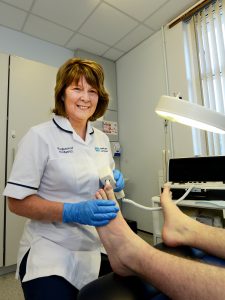 Podiatrists are trained to diagnose, treat, prevent and rehabilitate complications of the feet ankles, and lower limbs. They prevent, manage and correct foot problems, relieve pain, treat infection and keep people of all ages mobile and active.
Podiatrists are trained to diagnose, treat, prevent and rehabilitate complications of the feet ankles, and lower limbs. They prevent, manage and correct foot problems, relieve pain, treat infection and keep people of all ages mobile and active.
They are experts in all aspects of foot and lower limb structure, function and health. Podiatrists have the specialist training to manage the foot and lower limb complications resulting from long term conditions including diabetes, peripheral arterial disease, rheumatoid arthritis and musculoskeletal pain. They are also able to provide patients with specialist support by providing screening, diagnostics and tailored care plans.

